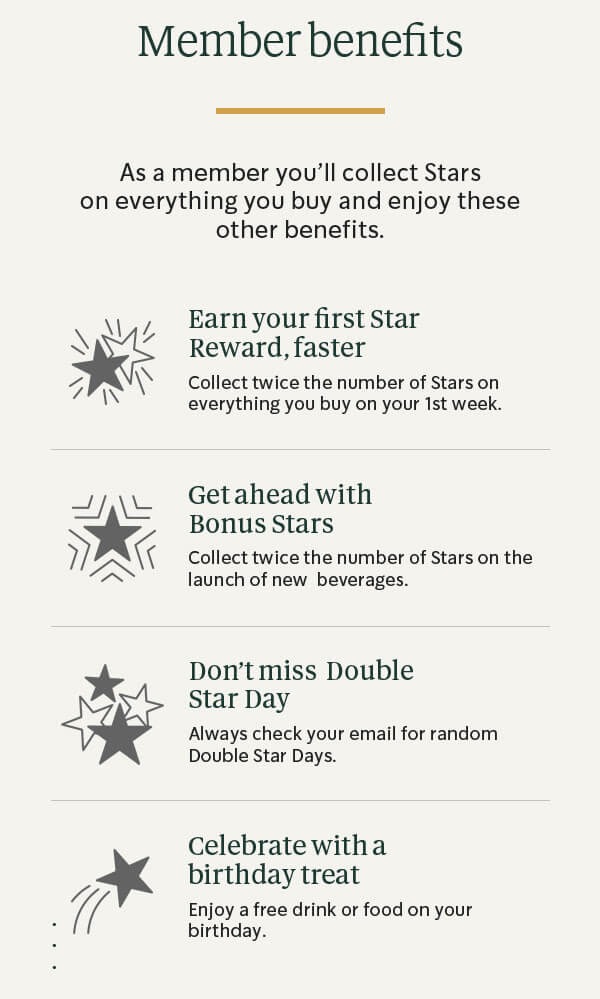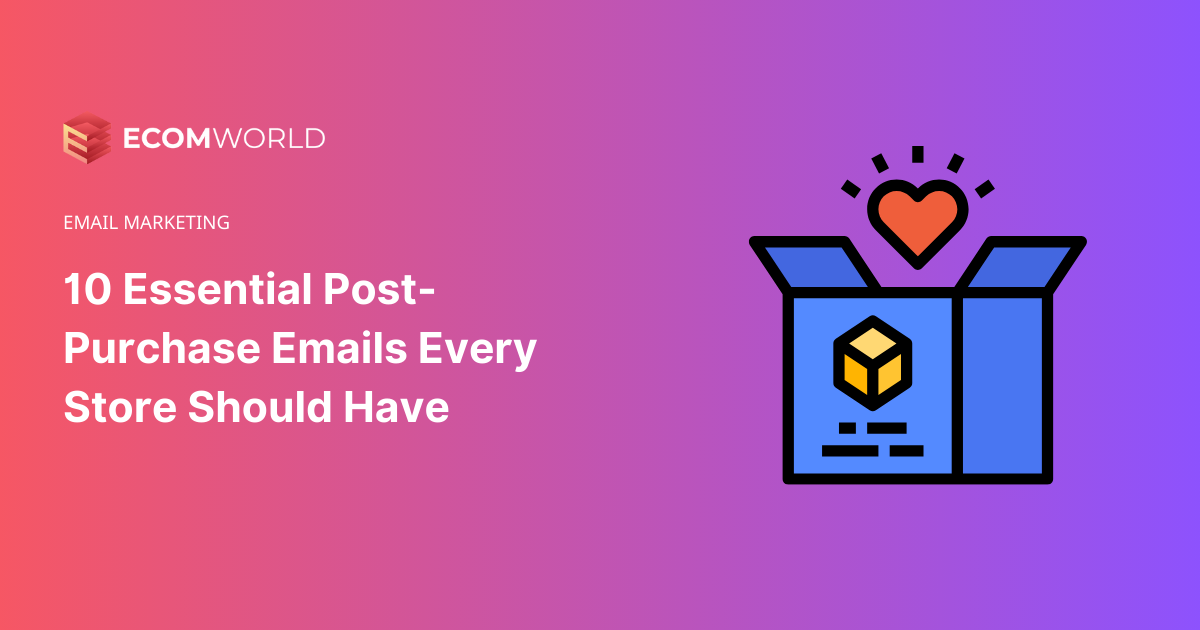What are post-purchase emails?
Post-purchase emails are automated email sequences that you dispatch following a customer’s purchase. These campaigns are timed at various stages: immediately after the purchase, during the delivery process, and several days afterward.
Post-purchase email campaign
A post-purchase email series contains both transactional and sales-oriented emails.
These emails usually contain details such as:
- Order number
- Receipts
- Product details
- Shipping information
- Contact information for support
Order confirmation emails
Expressing gratitude and confirming a purchase is a fundamental aspect of building strong customer relationships. When customers receive an order confirmation email, it’s an opportunity to establish trust and leave a memorable impression.
Transactional emails, like order confirmations, tend to have exceptional open rates, often double that of promotional emails. So, by infusing your confirmation email with personality and appreciation, you can make it even more impactful.
Take the example of Homes Alive Pets, which goes beyond the ordinary by warmly thanking customers for their purchase. They not only confirm the order but also provide a summary of the items and contact information for any assistance needed.
In the realm of e-commerce, the first email you send should always be a purchase confirmation. When someone clicks “Buy,” they seek reassurance that the transaction was successful. This confirmation tells them that their order has been received and is being processed.
E-commerce transactions require a high degree of trust since customers are sharing their credit card information with you. They want confidence that you’re a legitimate business and not a scam operating out of a remote location.
When you place an order on Cometeer’s website, you receive the following confirmation email. It has a short message letting you know the order is getting ready for shipping. You can also see an overview of your order, delivery address, and shipping method. Cometeer adds a referral link at the bottom so you can share the brand with friends and family and earn extra cash.
An order confirmation should be sent as soon as the payment clears, letting the customer know:
- Their order went through.
- When will it ship and how to track their shipment?
- How can they access their receipt?
- Who to contact if there’s a problem?
- What should they expect next?
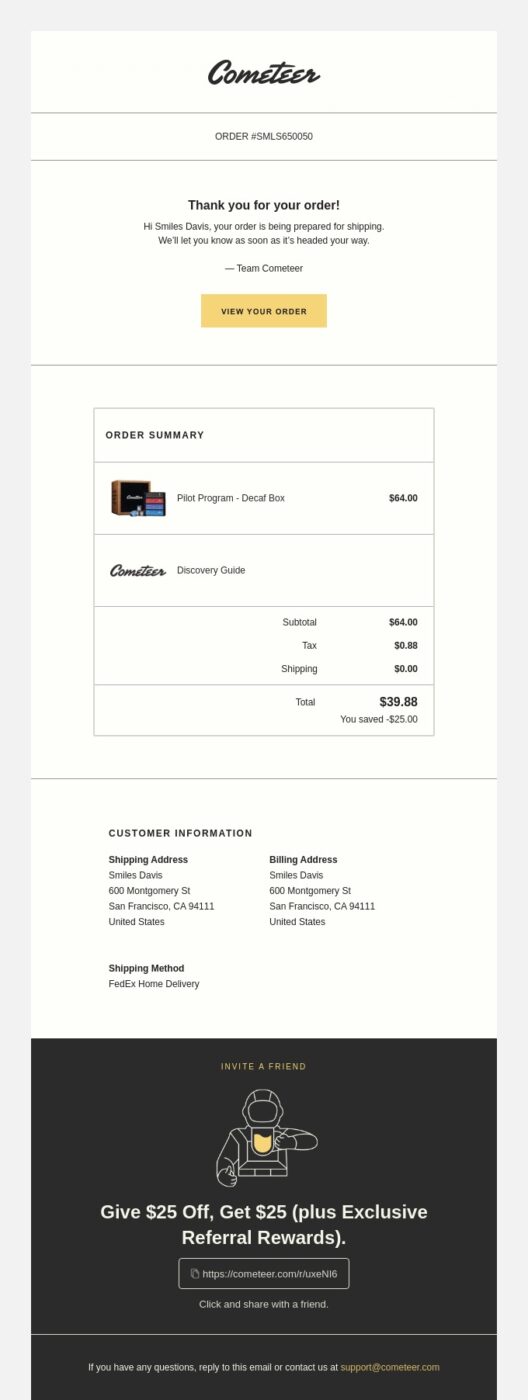
Follow up with a shipping confirmation
The shipping confirmation email allows you to update the customer on the status of their order, continue to build trust with them and nurture your relationship with them.
Shipping notification emails are not only helpful, they’re expected, but you don’t need to stop at the standard “Hey, your order is on its way” emails.
If you use Shopify Shipping, you can customize your email notifications to include your brand color, logo, and even the phrasing of the notification. You’ll find those options under Settings, in the Notifications section.
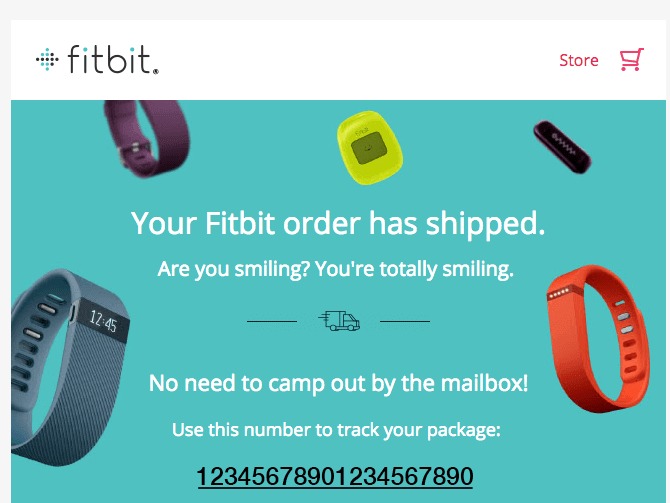
The shipping confirmation order is also an opportunity to provide advice before the product arrives.
- The email also includes the following:
- A way to contact the customer service team
- Links to important information such as returns & refunds, FAQs, delivery time, and payment
- A recommended section to promote other items
- A CTA to download the app
Check-in on the shipment
Around one week after the expected delivery date, it’s a good practice to follow up with your customers to ensure their order arrives as expected. During this check-in, consider asking the following questions:
- Did your order arrive on schedule?
- Did it arrive in the condition you anticipated?
- Have you encountered any problems or concerns since receiving your order?

How-to information emails
No matter what you sell, there are going to be people who need a wee bit of extra help to make the most of it.
- Providing valuable information to help your customers maximize the utility of their purchase is an excellent practice, especially a few days or weeks after they’ve received their product. Consider sending them:
- Relevant blog posts: If you’ve previously covered relevant topics on your blog, consider repurposing that content for an email or sharing a direct link to the post.
- New how-to guides: Pay attention to customer inquiries and support emails. Identify common questions from new customers or areas where most people might need guidance and create new how-to content accordingly.
- Tutorial series: For complex products or services, like knitting patterns or technology products, consider sending a series of emails with step-by-step tutorials to ensure new customers get the most value from their purchase.

Reminder emails
There could be various reasons why someone might have paused or never fully engaged with the product they purchased from you. For instance:
- If you sell supplements for a workout program, customers might have encountered a setback, like missing a few sessions in week three, and now they feel discouraged about getting back on track.
- For digital products, it’s common for people to get busy and lose momentum after the initial week of use.
Regardless of your product, consider whether there are any potential roadblocks that could cause customers to disengage before achieving the desired results. It could be something as straightforward as offering styling tips for a seasonal item. Sending timely reminders and helpful advice to ensure they get the most value from their purchase is an effective way to foster stronger customer relationships and ensure they receive the full benefit of their investment.
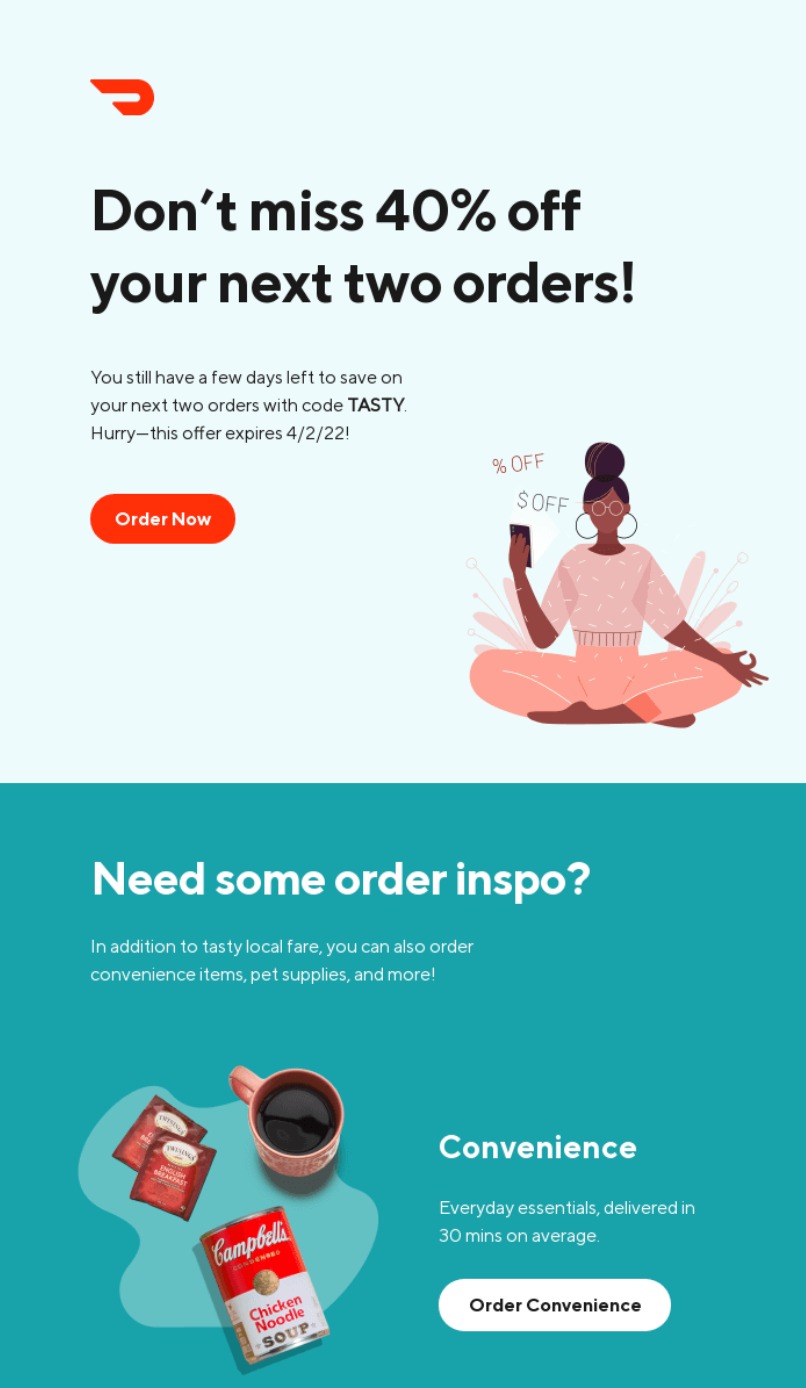
Survey emails
When you are researching an item online, what’s the first thing you do? You look at the reviews. You want to know whether the product is good or will fall apart two months after your purchase.
There’s this thing corporations like to use called the Net Promoter Score. It sounds complicated until you realize it’s based on a single-question survey, and all it asks people is to rank how likely they are to recommend your product on a scale of 1 to 10.
If someone is very likely to recommend the product (i.e., they answered with a 9 or a 10) you can follow up with them to share affiliate or rewards programs you offer based on their referrals.
If they’re very unlikely to recommend the product, now you know—and you can do something about it. When you get answers that fall under 5, you can follow up directly and ask if there’s anything you can do to fix the issues your customer is having.
Sometimes the answer will be no, but you might be able to turn some quietly disgruntled customers into fans with a simple fix like a replacement or a discount on their next purchase.
If you never ask, you’ll never know.
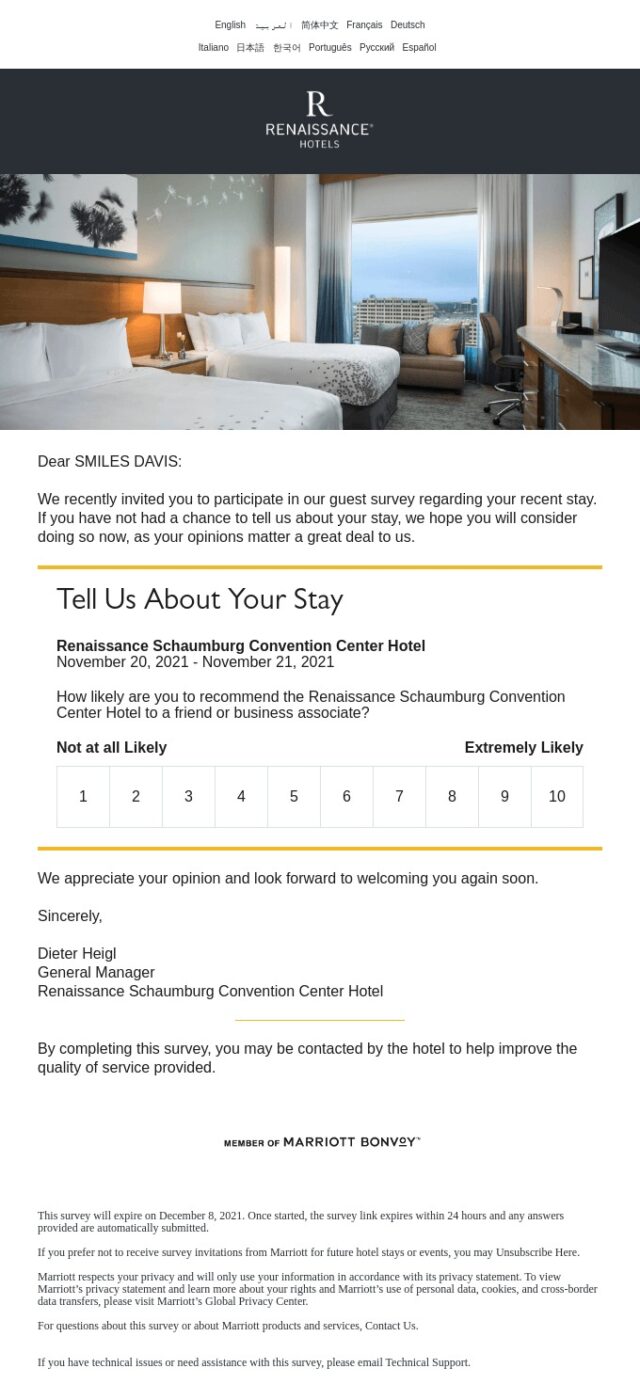
Customer information emails
When a customer places an order with you, they provide a significant amount of information about themselves. You typically have access to their name, address, order history, and, with the help of marketing software, you might even have insights into their behavior.
However, there’s always room to gain a deeper understanding of your customers, and one of the simplest methods is to merely inquire.
You don’t need to sell a subscription box to make this post-sales email work for your store. You can ask your customers anything that will help you segment your emails better. That might include:
- Which product lines they typically buy
- What activities they enjoy
- What sizes they wear
- How much they know about a specific topic
Once you have that information, you can tailor your emails so they go to the most relevant customers and the ones who are most likely to take you up on your newest offer, sale, or product.
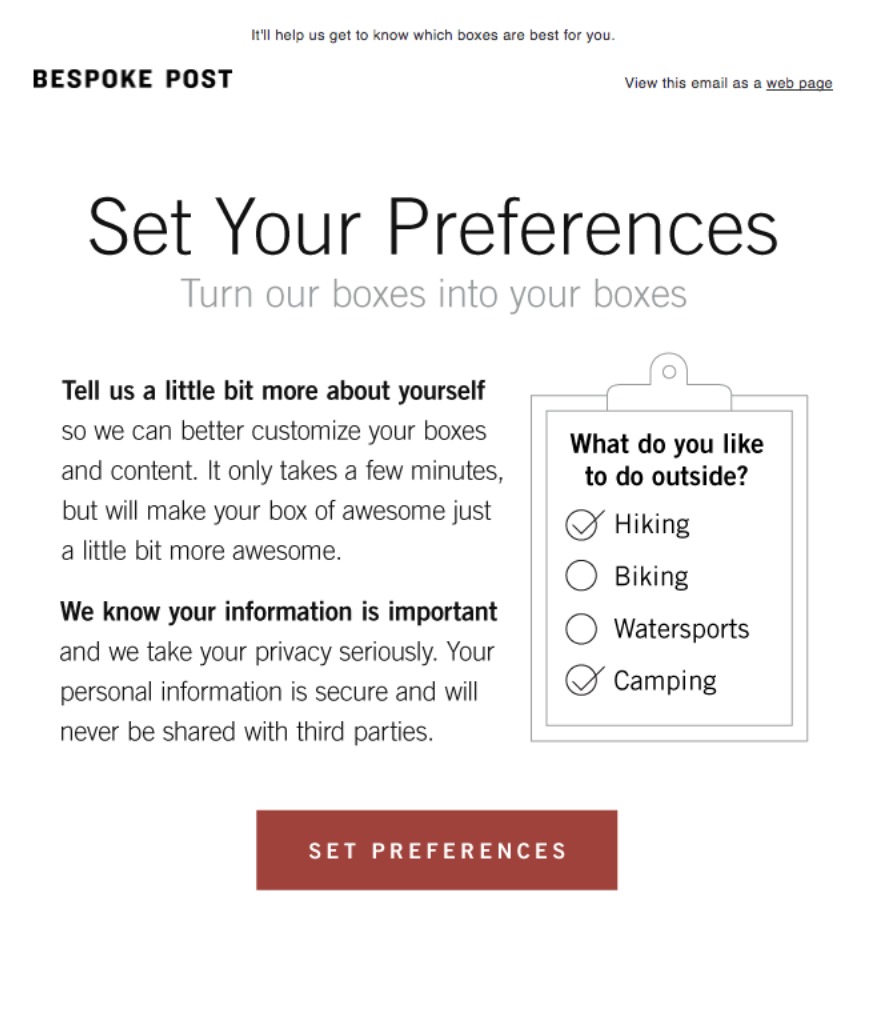
User-generated content emails
It’s not easy to build loyal fans out of your customers, so once they are fans of yours, why not have them share the love? As part of your follow-up emails, you can include an email asking them to share your products on social media platforms like Instagram or TikTok.
To build your own email to encourage your customers to share the love on social, consider:
- Which platforms are the best fit for your product and your audience?
- Do you want to include an incentive?
- What hashtag will you use to find their posts?
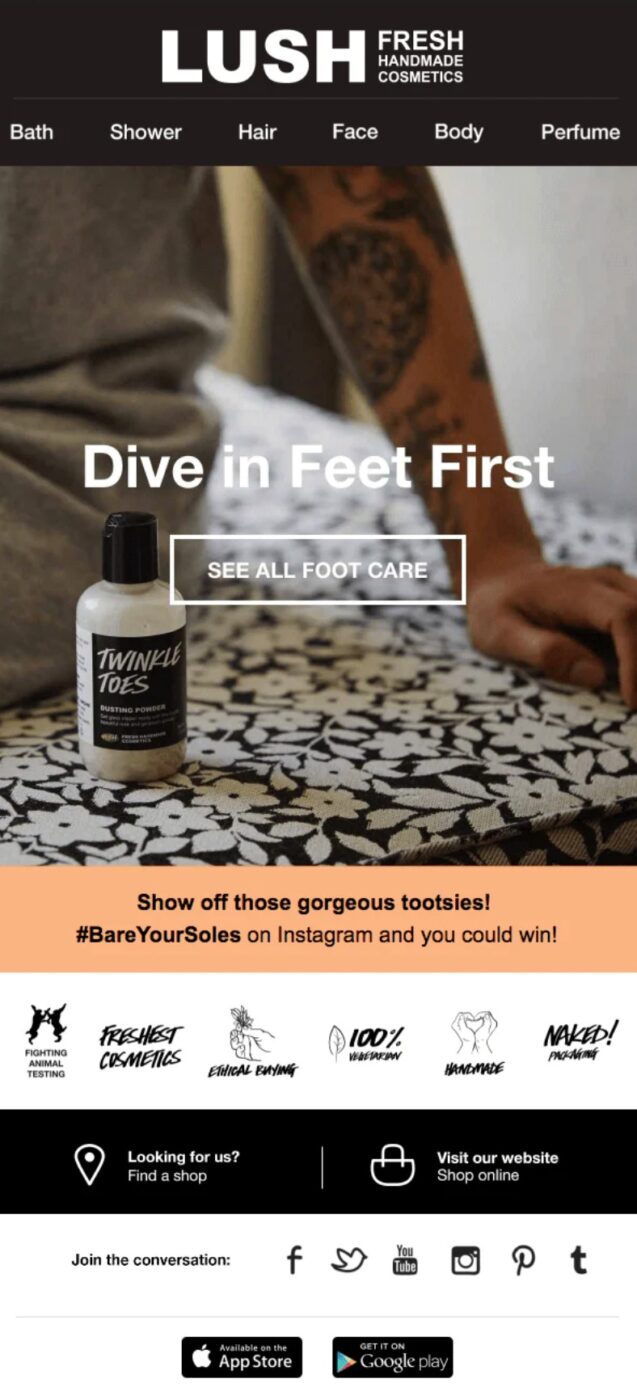
Upsell/cross-sell
The aim of upselling is to encourage customers to invest in more costly, upgraded, or premium versions of products, with the goal of increasing revenue. Cross-selling, on the other hand, entails suggesting complementary products based on customers’ recent purchases. Both approaches are highly effective when integrated into post-purchase email automation.
These emails simplify the process of discovering new products for customers, allowing them to explore these items in a non-intrusive way. It’s important to note that these emails aren’t pushing unnecessary products; instead, they are personalized to match the customer’s behavior and can enhance their overall shopping experience.
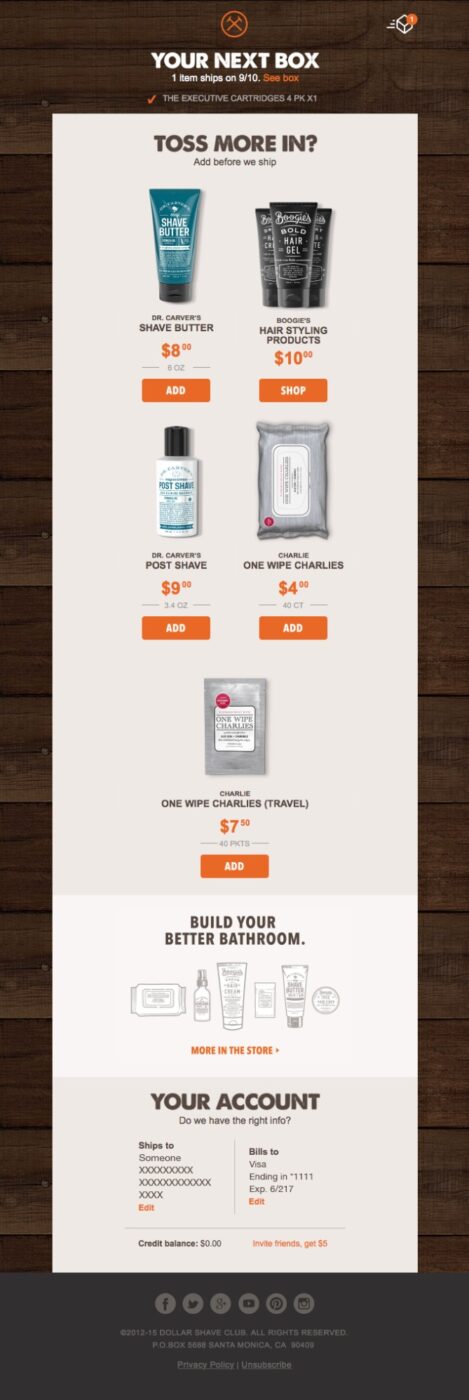
Encourage To Join loyalty Program
To further convince your customers to buy from you again, you can include relevant content, such as a loyalty or rewards program, that will entice them to make future purchases.
By including information about the rewards you offer in your post-purchase flow, you can encourage customer loyalty, boost sales and improve customer satisfaction. Loyalty programs are key in building long-term relationships with your customers.
